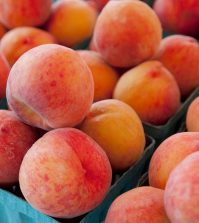- Study Says Most Parents Don’t Use Car Seats In Ride Share Vehicles Like Uber
- This 12-Year-Old Boy Is A Sophomore Aerospace Engineering Major!
- Fire Safety Experts Warn Of Hand Sanitizer Danger After A Mom and Kids Escape House Fire
- Recall Alert: Peaches May Be The Cause Of Salmonella Outbreak, 68 People Ill
- Summer Vacation In The Days Of COVID: Tips To Stay Safe
- How To Safely Grocery Shop During The Coronavirus Pandemic
- Michigan Teen With Vape-Related Illness Undergoes Double Lung Transplant
- Teen Kicks Off Anti-Vaping Campaign From Hospital Bed
- Teenager Receives Life Sentence For Strangling Sister To Death Over A Wi-Fi Password
- Toddler Falls To Death From 11th Deck of Cruise Ship
Can Gymnastics Stunt A Child’s Growth?


Getting kids involved in gymnastics is fantastic way to encourage physical fitness while introducing them to that first structured activity.
Although gymnastics can certainly help children develop balance, strength and flexibility, as with any sport, there are certain safety risks involved. Competitive gymnastics, especially, brings a very real risk for injuries such as sprains or strains, as well as stress fractures to the wrists, ankles and back.
Fortunately, there are ways parents can help their children prevent these types of injuries and more — even if they aren’t familiar with the sport themselves. Here are a few tips to keep in mind, as provided by Cleveland Clinic’s Bone, Muscle & Joint Team:
- Make sure you choose a great coach and a great gym. Sports and exercise medicine physician, Dr. Kim Gladden, stresses that finding the right coach is crucial. “You want someone who’s very familiar with proper technique who won’t allow your child to progress until they learn it,” she said in this article. Likewise, the condition of the gym itself is important. Parents should make it a point to tour a potential gym to ensure the equipment, floors and amount of supervision are all adequate and in order.
- Be sure to strengthen the core in order to protect the back. If your child isn’t conditioned properly, she/he could be at an increased risk for back strains, sprains and even stress fractures to the vertebrae. Be sure that your child is following the coach’s instructions for exercises that promote both flexibility and core strength.
- Take rehab seriously. Even if your child ends up with a strain, sprain or fracture, he or she will probably be able to return to gymnastics if they adhere to their rehab instructions.
- Listen to your child’s body if it’s hinting that gymnastics isn’t for them. A string of injuries could be a sign that your child is in the wrong sport; certain body types are more ideal for certain sports.
Something else parents might want to keep in mind is the potential for stunted growth for children in competitive gymnastics. Although it seems like one of those sport-specific myths, it’s actually a very real risk for elite youth.
According to an article on Livestrong.com, kids who participate in elite levels of gymnastics tend to follow a certain pattern of skeletal growth and maturation. Although it’s more obvious in males, elite artistic gymnasts (whether male or female) do experience a decrease in growth potential. Rhythmic gymnasts who are female don’t necessarily experience a reduction in growth potential, but they do tend to have delayed growth. Additionally, the prepubescent time period tends to last longer (shifting puberty to a later age) for both gymnasts in the rhythmic and artistic sides.
The bottom line: As with any sport, arming yourself and your child with the right information can go a long way in preventing injuries and ensuring a fun, enriching experience.








0 comments